JAJSEV1A September 2017 – February 2018 TPS7A54-Q1
PRODUCTION DATA.
- 1 特長
- 2 アプリケーション
- 3 概要
- 4 改訂履歴
- 5 Pin Configuration and Functions
- 6 Specifications
- 7 Detailed Description
-
8 Application and Implementation
- 8.1
Application Information
- 8.1.1 Recommended Capacitor Types
- 8.1.2 Soft Start and Inrush Current
- 8.1.3 Optimizing Noise and PSRR
- 8.1.4 Charge Pump Noise
- 8.1.5 Current Sharing
- 8.1.6 Adjustable Operation
- 8.1.7 Power-Good Operation
- 8.1.8 Undervoltage Lockout (UVLO) Operation
- 8.1.9 Dropout Voltage (VDO)
- 8.1.10 Device Behavior During Transition From Dropout Into Regulation
- 8.1.11 Load Transient Response
- 8.1.12 Reverse Current Protection Considerations
- 8.1.13 Power Dissipation (PD)
- 8.1.14 Estimating Junction Temperature
- 8.2 Typical Application
- 8.1
Application Information
- 9 Power Supply Recommendations
- 10Layout
- 11デバイスおよびドキュメントのサポート
- 12メカニカル、パッケージ、および注文情報
6.6 Typical Characteristics
at TA = 25°C, VIN = 1.4 V or VIN = VOUT(NOM) + 0.4 V (whichever is greater), VBIAS = open, VOUT(NOM) = 0.8 V, VEN = 1.1 V, COUT = 47 µF, CNR/SS = 0 nF, CFF = 0 nF, and PG pin pulled up to VIN with 100 kΩ (unless otherwise noted)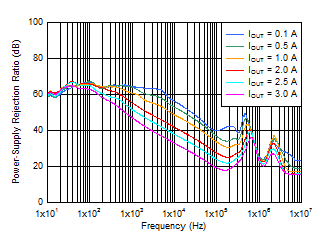
| VIN = 1.1 V, VBIAS = 5 V,
COUT = 47 µF || 10 µF || 10 µF, CNR/SS = 10 nF, CFF = 10 nF |
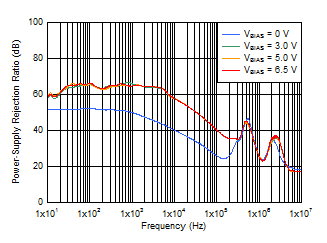
| VIN = 1.4 V, IOUT = 1 A,
COUT = 47 µF || 10 µF || 10 µF, CNR/SS = 10 nF, CFF = 10 nF |
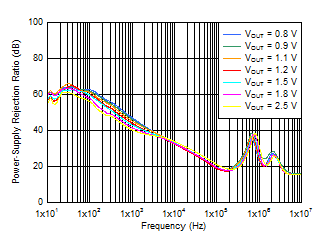
| VIN = VOUT + 0.3 V, VBIAS = 5.0 V, IOUT = 3 A,
COUT = 47 µF || 10 µF || 10 µF, CNR/SS = 10 nF, CFF = 10 nF |
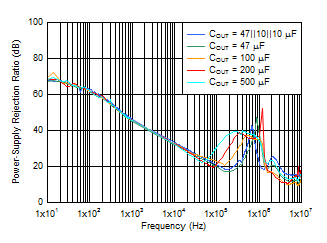
| VIN = VOUT + 0.3 V, VOUT = 1 V, IOUT = 3 A, CNR/SS = 10 nF,
CFF = 10 nF |
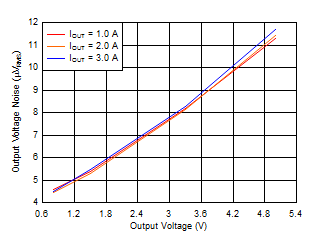
| VIN = VOUT + 0.3 V and VBIAS = 5 V for VOUT ≤ 2.2 V,
COUT = 47 µF || 10 µF || 10 µF, CNR/SS = 10 nF, CFF = 10 nF, RMS noise BW = 10 Hz to 100 kHz |
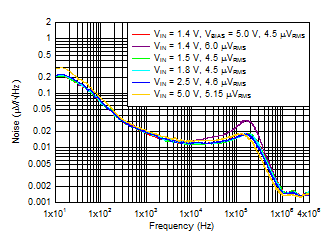
| IOUT = 3 A, COUT = 47 µF || 10 µF || 10 µF, CNR/SS = 10 nF,
CFF = 10 nF, RMS noise BW = 10 Hz to 100 kHz |
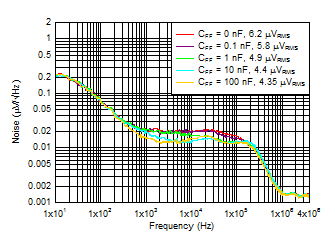
| VIN = VOUT + 0.3 V, VBIAS = 5 V, IOUT = 3 A, sequencing with a dc/dc converter and PG, COUT = 47 µF || 10 µF || 10 µF,
CNR/SS = 10 nF, RMS noise BW = 10 Hz to 100 kHz |
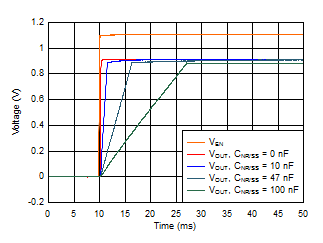
| VIN = 1.2 V, VOUT = 0.9 V, VBIAS = 5.0 V, IOUT = 3 A,
COUT = 47 µF || 10 µF || 10 µF, CFF = 10 nF |
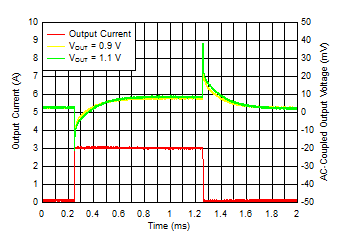
| IOUT, DC = 100 mA, COUT = 47 µF || 10 µF || 10 µF,
CNR/SS = CFF = 10 nF, slew rate = 1 A/µs |
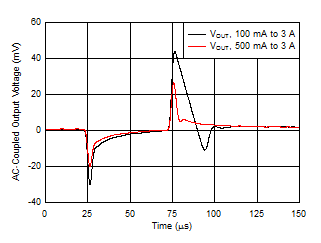
| VIN = 1.2 V, VBIAS = 5.0 V, COUT = 47 µF || 10 µF || 10 µF,
CNR/SS = CFF = 10 nF, slew rate = 1 A/µs |
(VOUT = 0.9 V)
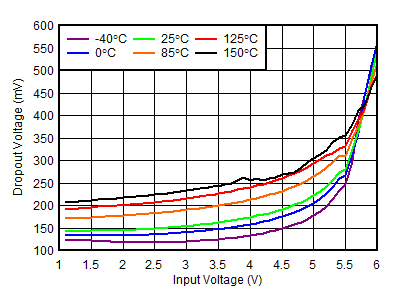
| IOUT = 3 A, VBIAS = 6.5 V |
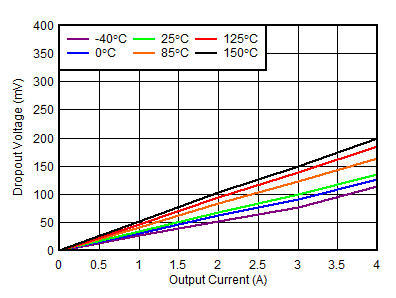
| VIN = 1.1 V, VBIAS = 3 V |
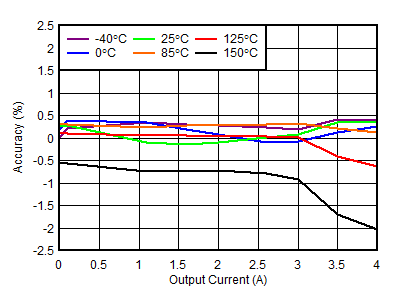
| VIN = 1.4 V, VBIAS = 0 V |
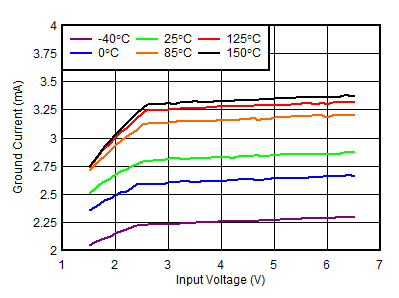
| VBIAS = 0 V, IOUT = 5 mA |
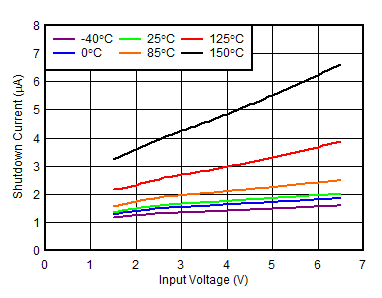
| VBIAS = 0 V |
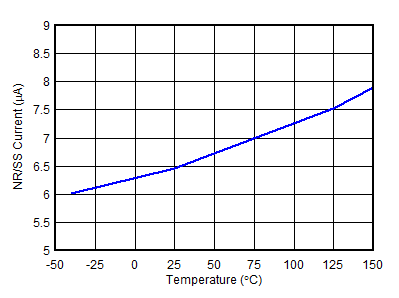
| VBIAS = 0 V |
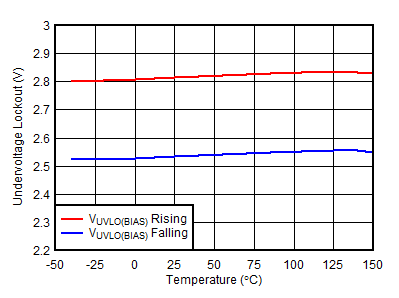
| VIN = 1.1 V |
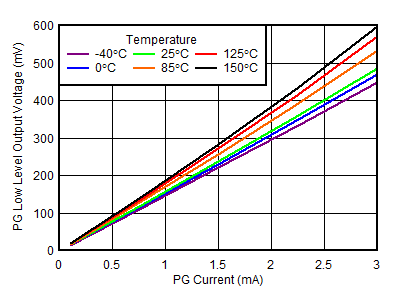
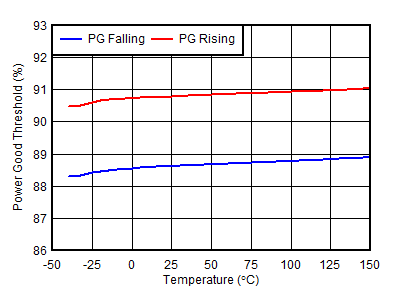
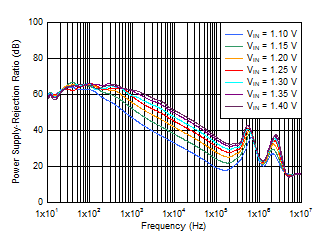
| IOUT = 3 A, VBIAS = 5 V,
COUT = 47 µF || 10 µF || 10 µF, CNR/SS = 10 nF, CFF = 10 nF |
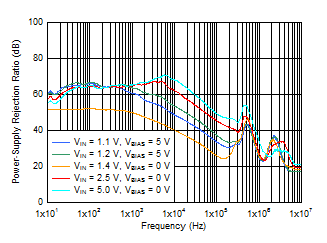
| IOUT = 1 A,
COUT = 47 µF || 10 µF || 10 µF, CNR/SS = 10 nF, CFF = 10 nF |
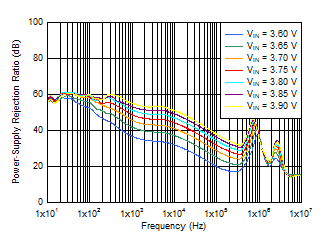
| IOUT = 3 A, COUT = 47 µF || 10 µF || 10 µF, CNR/SS = 10 nF,
CFF = 10 nF |
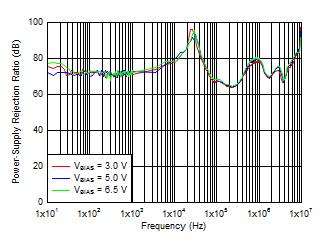
| VIN = VOUT + 0.3 V, VOUT = 1 V, IOUT = 3 A,
COUT = 47 µF || 10 µF || 10 µF, CNR/SS = 10 nF, CFF = 10 nF |
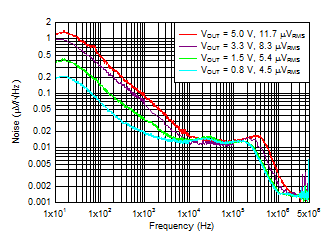
| VIN = VOUT + 0.3 V and VBIAS = 5 V for VOUT ≤ 2.2 V, IOUT = 3 A, COUT = 47 µF || 10 µF || 10 µF, CNR/SS = 10 nF, CFF = 10 nF,
RMS noise BW = 10 Hz to 100 kHz |
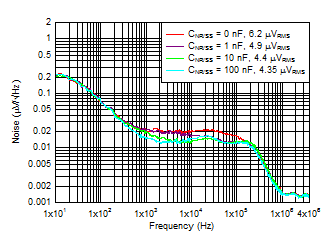
| VIN = VOUT + 0.3 V, VBIAS = 5 V, IOUT = 3 A, COUT = 47 µF ||
10 µF || 10 µF, CFF = 10 nF, RMS noise BW = 10 Hz to 100 kHz |
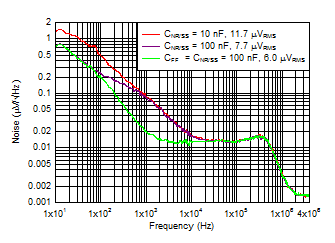
| IOUT = 3 A, COUT = 47 µF || 10 µF || 10 µF, CFF = 10 nF,
RMS noise BW = 10 Hz to 100 kHz |
||
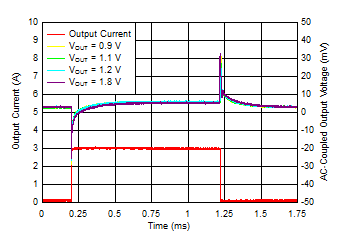
| VIN = VOUT + 0.3 V, VBIAS = 5 V, IOUT, DC = 100 mA, slew rate = 1 A/µs, CNR/SS = CFF = 10 nF, COUT = 47 µF || 10 µF || 10 µF |
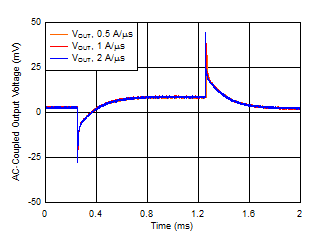
| VOUT = 5 V, IOUT, DC = 100 mA, IOUT = 100 mA to 3 A,
COUT = 47 µF || 10 µF || 10 µF, CNR/SS = CFF = 10 nF |
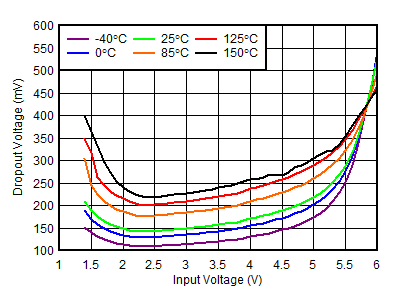
| IOUT = 3 A, VBIAS = 0 V | ||
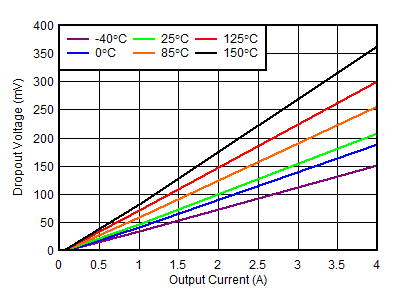
| VIN = 1.4 V, VBIAS = 0 V |
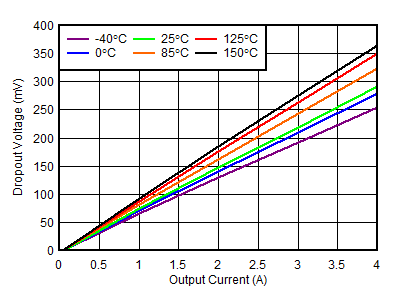
| VIN = 5.5 V |
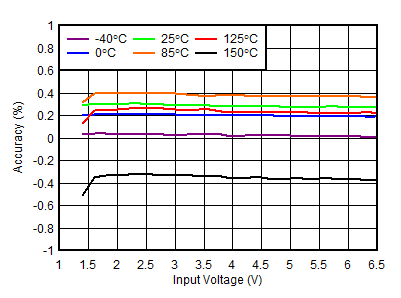
| VOUT = 0.8 V, VBIAS = 0 V, IOUT = 5 mA |
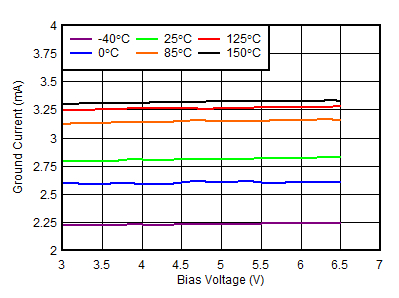
| VIN = 1.1 V, IOUT = 5 mA |
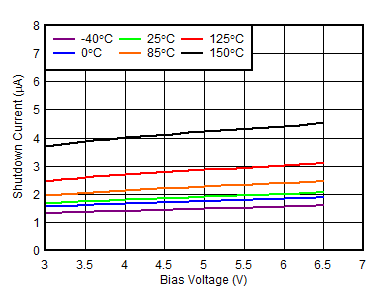
| VIN = 1.1 V |
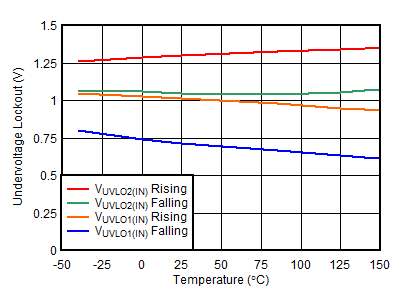
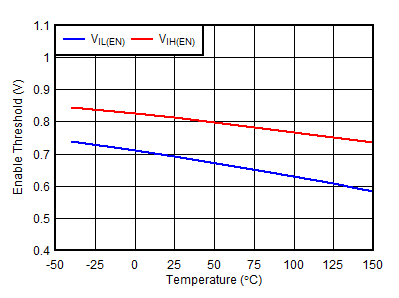
| VIN = 1.4 V, 6.5 V |
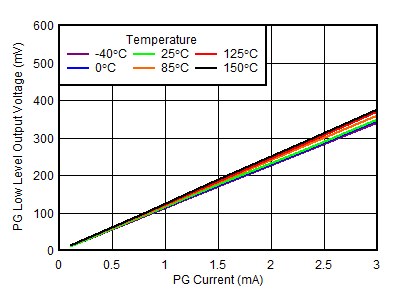
| VIN = 6.5 V |
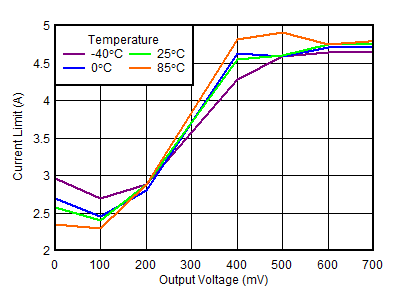
| Temperature limited because of power dissipation |